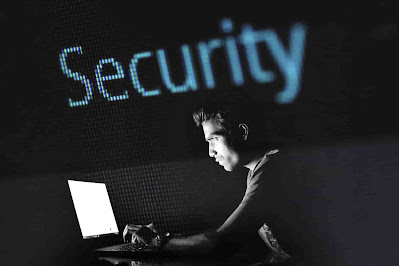Mac users are usually of the opinion that their computers are immune to malware and other cyber threats.
There is no black and white answer to this claim.
For one, the Mac OS is surely secure and can handle its own in most situations. On the other hand, there have just been a little too many Mac issues for us to ignore them all. If you don’t take the extra steps to secure your unit today, you might as well become the next on a list of victims.
If you don’t believe us, check out the report that sees Mac threats soar to as much as twice what we have on Windows.
So that you don’t become yet another piece of statistic, here are some security tips to embrace.
Tip #1 – Keep your Mac under lock
This is not a call to get an actual lock and key to put around your Mac computer.
When setting up the Mac for the first time or if you have been using it for a while, there are certain security settings that allow you to bypass/ enable for the best user experience.
Under this section, we will be enabling the ones that you might have skipped out on while disabling some others.
Let’s get to it.
➺ Have non-admin accounts – Admin user accounts allow you to do and undo on your Mac. From inside the admin account, you can grant root access to certain programs, install any file and access all the sensitive files on the computer. That is fine if you are always the one using the computer – but not when it falls into the wrong hands. Thus, have a non-admin account that you use for everyday tasks – and a password-protected admin account that you only use when the need arises.
➺ Disable automatic login settings – Apple aims to make the user’s life better and easier with the automatic login. Instead of having to enter a password all the time, switching the computer on gives you access to all the files. Again, this is fine if your Mac is always on you. If you have to take it to the office/ travel/ outside the home at all, anyone who gets access to the Mac could access all of your files without worrying about a password.
➺ Choose secure passwords – Poor passwords remain the biggest reason why most people fall victim to hacks and attacks. This is why more hackers are getting sophisticated with brute force attempts, rainbow table hacking, dictionary attacks, and hybrid attacks. You can beat them at their own game when you use secure passwords on your Mac and every account you have on it too. Fortunately, Apple will always try to suggest a password to you when opening your accounts so you can just go with that.
Tip #2 – Leverage Internal Security Settings
The Mac, out of the box is not the best against malware. When you leverage all of the tools that Apple has built into it, though, you get a machine that is as tough against malware attacks as they come.
The interesting part about this one is that you don’t have to pay anything to get that improved security. You already have it as part of your system.
Here are the areas you want to turn the spotlight on:
➺ Enable FileVault – if you are not already using the FileVault that ships with your system, you are wrong. FileVault encrypts all of the data on your hard drive/ disk the moment the computer is shut down. It takes an authorized user to log into the computer again to de-encrypt these files. Thus, if anyone were to get access to your Mac, they would not be able to read any of the data on the hard drive no matter what they did.
➺ Disable Spotlight Suggestions – Spotlight is meant to serve you suggestions from the internet based on your preferences. Already, that means it is collecting some form of data about your computer usage. Left unchecked, this feature sends data back to Apple – and other third-party content providers too. There is nothing there that you won’t get with a traditional web search anyways, so you could go-ahead to disable it, and you won’t feel anything missing.
Tip #3 – Install Security Apps
Help your Mac stand a better chance against growing security threats with specialized security apps in the market.
Apple has done It's best but it cannot have its hands in all the pies (no pun intended). That is why you should go with specialized solutions from other software vendors on the market.
Some of the security apps and software that you should install on your Mac include, but are not limited to:
➺ Outbound Firewall – the Mac comes with a firewall already. The in-built firewall only offers inbound protection, meaning that it doesn’t allow known malware from interacting with the system. The problem occurs when a legitimate-looking app starts trying to access the internet via your computer as most malware behaves. In that instance, you would need an outbound firewall to track and stop these processes while also informing you of the danger your computer might be in.
➺ Antivirus – there are virus files even on websites these days. You don’t need to actively click a download button for some of them to even start downloading underground. There, and we have also seen some virus scripts that execute just because you accessed a web page. Don't worry about all of that anymore as long as you have premium antivirus software from a reputable vendor on board. Don’t forget to schedule periodic checks too to ensure nothing has slipped past some cracks.
➺ VPN – installing a VPN for Mac security is a no-brainer in the 21st century. These pieces of software encrypt your internet connection, keep you anonymous on the internet and obfuscate your data so that it is almost impossible to follow.
➺ Password Manager – all of those secure passwords that we recommended up there will be tough to keep track of. This is what leads most users into clicking the ‘Forgot Password’ button and setting the password back into something easier to remember – thus easier to hack. A password manager safely collects and stores all of these secure logins for you so that you never have to worry about remembering or losing them.
➺ Authenticator apps – even with the best passwords, we still recommend authenticator apps. They provide an extra layer of security for the rare case when an unauthorized user gets access to your password. Authenticator apps are also better than SMS 2FA since they create their codes on-site, making it much harder to intercept.
Tip #4 – Improve Network Security
Hackers can be extremely brilliant, so much that they hack the network that your Mac is on to hack the Mac itself.
The genius of that move has left many at the mercy of some of the worst breaches, even though they did every other thing right.
If anything, this is only a testament to the fact that a chain is only as strong as the weakest link.
In the network security department, do these:
◆ Never connect your device to a public Wi-Fi network.
◆Change the default name and password of your internet router.
◆ Have a VPN to encrypt your internet network/ traffic better.
◆ Every unit connected to your home network should be secured. The least secure unit could be used to break into the network.
◆ Where possible, do not put your Mac on the same internet network as smart home devices.
Tip #5 – Observe General Best Practices
We started with the least common things to do so you can get familiar with them.
Now, we end with what should be routine security measures but most users tend to neglect them.
If you see anything on the list below that you have not done in a long time, today is a good day to get on it.
◆ If you still have the Flash player installed, now might be a good time to boot it out. The security problems are just too much to be contained, and you can do without that headache.
◆ Look through your device privacy and security settings regularly to see if there are any preferences you are not comfortable with.
◆ Check your unit for software updates. Sometimes, an update might be available that you didn’t get the notification for.
◆ Always update your apps and programs to the latest version as soon as you are prompted to do so.
◆ Never install apps from sources other than the official app store.
◆ Always beware of shoulder surfers when entering sensitive information.
◆ Never leave your computer unattended, especially when in public.
◆ Don’t allow connections from untrusted devices to your Mac.
◆ Have a backup running for your Mac. We would prefer if you had an online and offline backup running separately.
Final Words
Some of the very the best advice that you can get in the commercial Mac security niche have all been distilled into bite-sized information above.
We can assure you that if you implement all of these solutions, hackers would rather leave you alone to attack other unsecured users.







0 Comments
Don't Spam
Don't Use Harmful or Abusive Word